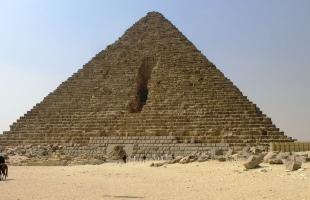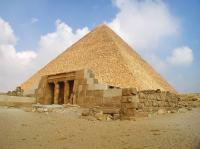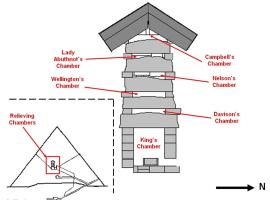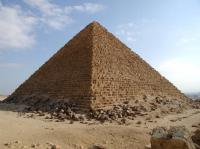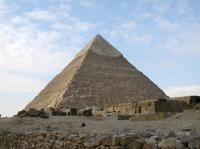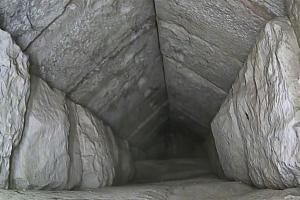The pyramid of light of La Mana

Extraordinary objects have been found in the jungle of Ecuador, in a place called La Mana. A completely inexplicable collection, rich in esoteric symbols, which recalls a forgotten past and the vanished land of Mu.
Historians and scientists strive to explore our past as comprehensively as possible. Yet scholars are increasingly dealing with areas of research that are shrouded in darkness and do not give us peace. This is the case of the most extraordinary collection in the world: the mysterious stone objects from La Mana, an ancient city of gold located in the middle of the jungle of Ecuador.
As chance would have it, these pieces caught my attention in January 2000, during the feverish preparations for the major exhibition Unsolved Mysteries. It all started with a phone call from a friend, the former solo dancer of the Wiener Staatsoper and now well-known director Herbert Nietsch. He asked me if it was possible to meet. It was his half-brother, Dr. Valentin Hampejs.
When we met, he asked me to support an ambitious project: the making of a television documentary on Doctor Hampejs. He is a triple doctor (medicine, neurologist and psychiatrist) who has lived in Ecuador for over 20 years. Not only has he studied Ecuadorian shamanism in depth, but in the meantime he has become its leading expert and he himself successfully practices as a shaman and naturalist doctor. Looking carefully at some photos I noticed one that reproduced strange stone objects. I asked what it was about. Herbert Nietsch told me that his brother had an acquaintance in Ecuador who, while searching for gold, had unearthed mysterious objects of this type. Upon hearing this I said to myself: “I have to see this collection with my own eyes! And as soon as possible!”. I wanted to find those pieces to display them in my exhibition and make them known to a wide audience.
It was the first of several research trips to South America. I left in February 2000. I was accompanied by my friend Reinhard Habeck (collaborator in the research and cataloger of the Unsolved Mysteries exhibition), Dr. Willibald Katzinger (director of the Nordic Museum in Linz and scientific coordinator of our exhibition) and the essayist and civil engineer Hans Joachim Zillmer.
The pyramid and the eye
In Quito, the capital of Ecuador, we were immediately received by Doctor Hampejs, together with whom we reached a small place outside the city. No one in those surroundings would suspect the existence of unusual treasures from hidden eras. Here we first met German Villamar, an agricultural entrepreneur and seminar coordinator, probably the owner of the most unusual pieces in the world.
When he led us into his living room, we expressed uncontainable amazement. About 50 stone and terracotta objects had been arranged on a table: stones of different lengths, with bizarre features and singular deformations, stone snake heads, plates with strange incisions and spirals, clay sculptures with anomalous characteristics and much more Still.
One object in particular fascinated and struck us more than anything else: a stone pyramid on which an eye was set and where 13 steps were engraved. Upon closer inspection it became clear that the eye was worked with stone and set in the pyramidal object. Its color is grey, like the pyramid itself. We immediately recognized this very ancient symbolism. We find it described in various traditions, for example in the Bible, as well as connected to the Serpent Guild, a secret society that has existed in the East since ancient times. Later this symbolism is found in Masonic lodges, in alchemical symbolism and in the secret societies of the Illuminati. As further confirmation, German Villamar took out a one-dollar bill, on which that same symbol was depicted. This symbolism of the pyramid has already been talked about for centuries. Several theories have been put forward, discussed controversially.
The thing became more and more exciting: after having examined all the objects on the table, German Villamar led us into a dark adjoining room. He placed the pyramid on a table and turned on an infrared lamp. At that moment we all fell silent. The eye of the pyramid gave off light like a true divine eye, and the steps appeared like bluish engravings. The image offered an almost ghostly vision! This stone pyramid was truly something special.
After this exciting presentation, we examined the object very carefully and noticed something surprising: at the foot of the pyramid we could recognize small golden inlays, depicting the constellation Orion. Engravings had been placed on it, initially indecipherable characters. Only months later did we learn the contents of these signs. According to a translation made by Professor Kurt Schildmann, president of the German Linguistic Society, that cryptic text would mean: “The creator's son is on a journey.”
From viewing most of the artifacts it could be seen that they have no relation to the existing pre-Columbian culture. Are they modern forgeries? But who would have been capable of producing such an object? And for what reason? How did these strange pieces arrive in Ecuador? Who made them, when and for what purpose?
Klaus Dona











